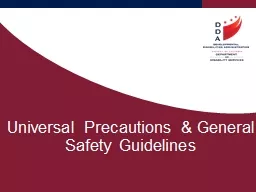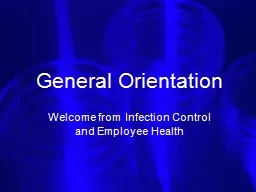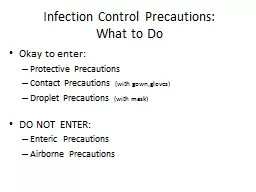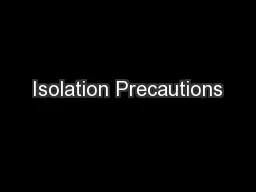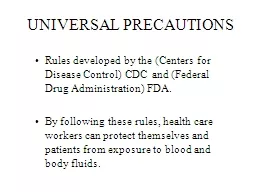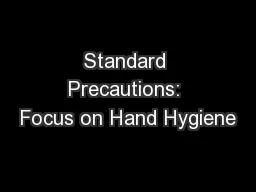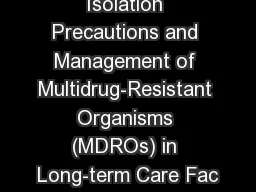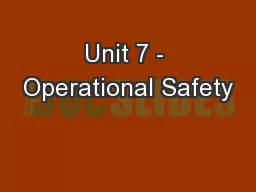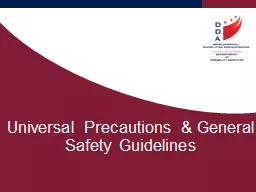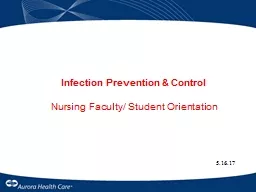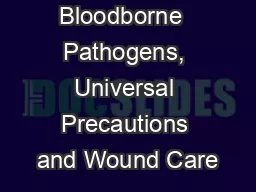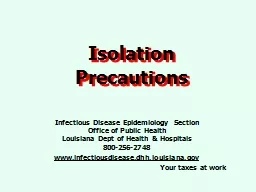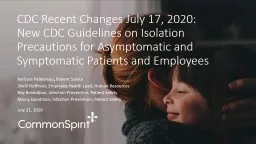PPT-Universal Precautions & General Safety Guidelines
Author : briana-ranney | Published Date : 2020-04-11
This required training applies to all who may reasonably be expected to come into contact with blood body fluids or other potentially infectious materials on the
Presentation Embed Code
Download Presentation
Download Presentation The PPT/PDF document " Universal Precautions & General Saf..." is the property of its rightful owner. Permission is granted to download and print the materials on this website for personal, non-commercial use only, and to display it on your personal computer provided you do not modify the materials and that you retain all copyright notices contained in the materials. By downloading content from our website, you accept the terms of this agreement.
Universal Precautions & General Safety Guidelines: Transcript
Download Rules Of Document
" Universal Precautions & General Safety Guidelines"The content belongs to its owner. You may download and print it for personal use, without modification, and keep all copyright notices. By downloading, you agree to these terms.
Related Documents

